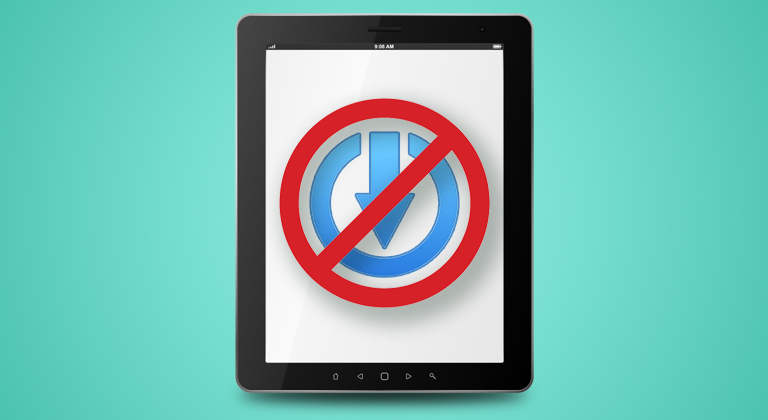How to Revamp your Publishing Empire in 2024
Self-publishing is essentially the same as running a business, with books as your product. That means you can’t just write a novel, hit publish, and sit back as the profits roll in on your publishing empire. Like any business, you have to watch the market and your competitors, improve your existing stock, and make sure that customers are aware of what you have to offer!
As a new year dawns, there is no better time to start planning how to improve your publishing business, and to help with that, Ginger has put together a month by month plan of what to look at and what to take action on.
The start of a new year leads many people to make “New Year Resolutions” – goals and promises intended to lead to a happier, healthier life in the months ahead.
Personally, I’m a huge fan of New Year Resolutions – even if it does mean the gym is swollen every January with people who promised themselves they’d get in shape this year (many of whom end up quitting by February.)
But New Year Resolutions don’t need to be limited to your personal life. The start of a new year is also a great time to take a look at your self-publishing empire and set yourself some goals to help ramp it up for the year ahead. I outlined my writing goals for the new year, and I felt like there might be some value in sharing them with other aspiring writers.
January – Write Every Day
Oscar Wilde said that we’re verbs, not nouns – and therefore you’re not actually a writer unless you’re actually writing. That’s why the first and most important goal I set myself for the new year is to write every damn day. We’ve shared many blog posts about this lofty ambition, so I won’t rehash any of that material – but it is worth pointing out that writing just 1,000 words a day adds up to 365,000 words by the end of the year; which could be several published novels if you play your cards right. Writing is at the core of everything we do, and therefore if you want to be more successful as a self-published author in the new year, you need to approach getting words onto the page with the same discipline that it takes to get yourself to the gym every day.
February – Audit Your Empire
I’ve written and self-published over 30 books and sold more than 69,000 copies of them – yet I’m still guilty of a crime many authors succumb to: Publishing books and then just forgetting about them. Over the course of nearly a decade of publishing, I have titles up there with incorrect backmatter links, out-of-date formatting, badly-written blurbs, and a host of other issues that I keep promising myself I’ll fix, but never seem to get around to. Well, that’s the goal for February. It’s time to audit your publishing empire, review each and every book you have available for sale, and then make the necessary updates to their front-matter, back-matter, and every other element that could trip up a potential reader on their way to the Buy Now button. You’re not trying to polish them right now – you’re just trying to fix things that are obviously broken.
March – Do Some Research
Stephen King warned would-be writers that you need to spend as many hours reading as you intend to spend writing – and March is the perfect time to get started with that. Consider what category your books fit under, and start researching by reading some of the most popular and best-selling books in that genre. You’re not looking to mine them for plot ideas – more just to get a feel of what readers in that genre are looking for. If you write thrillers, check out some Lee Child or James Patterson books. If you’re into Rock Star Romance, check out some of the best-sellers from Julia Wolf or Jillian West. If you’ve got the self-awareness and humility to succeed as a self-published author, you should be able to identify where your books hit the mark, and where they fall short. The goal is to get an idea of which elements are essential to have a successful book in that category.
April – Spring Clean your Book Catalog
Now that you’ve audited your catalog of books, and got a feel for what’s popular in your chosen genre, it’s time to get serious about selling your writing. Go back and check on your catalog of books once again, but this time pretend to be a potential customer and try to explore your books through their eyes. Are your covers striking enough to get people to click on them? Do they look like they fit alongside covers from the best-selling books in your genre? Are your blurbs concise and compelling? Make notes about each of the elements of your books that need an update and we’ll approach solving those issues in the months ahead. This list will be your Bible moving forward.
May – Judge a Book by its Cover
It’s time to work on this list you created, and the perfect place to start is from the outside in. Your cover doesn’t just sell your book – it often sells the decision to even consider buying your book. It’s perhaps the first and most essential element toward having a successful self-publishing career, yet one many writers overlook. Following your audit and spring cleaning, you should revisit every cover for every book in your catalog and compare them to other books in the genre. Does your cover look like it belongs sandwiched between the best-sellers in your category? If it doesn’t, it’s time to invest in a new cover from a solid designer. From thrillers to romance, all genre books have essential elements that need to be included to meet the “dress code” of a best-seller, and if your books are missing those elements, you’ll never be as successful as you’d like. Read more about how important a cover can be, and how to identify the must-have elements for your genre, in this post.
June – Brighten up Your Blurbs
Your cover is what gets people to click on your advertising and land on your product page. Once they’re there, your job as a self-published author is to provide an experience that helps these potential readers become actual customers. Every element of your book’s product page is important, but first and foremost will be your blurb. It needs to be killer – concise, compelling, and delivering the kind of hook that demands readers find out what happens next. Review the blurbs for each of your books with the objective eye of a potential customer and then take action to polish this prose until it shines like a diamond. You can find some great advice about writing and re-writing your blurbs here.
July – Take Another Look at your Look Inside
Once new arrivals to your product page have checked out your blurb, one of the next places they’ll likely go is your Look Inside – the tiny segment of your book that Amazon gives them a preview of prior to purchase. For many authors, this is often a very overlooked part of the buying experience – and I speak from experience when I tell you that I probably lost out on hundreds of sales by not reviewing my Look Inside a year or so after publishing my books. From a dreary first paragraph to typos on the first page, your Look Inside will trip customers up unless you polish it like a diamond; so that’ll be your job in July. For some great tips on how to write a killer first page, check out this recent episode of the Fully Booked podcast.
August – Review Your Reviews
Book reviews are one of the most frustrating elements of the self-publishing journey. People generally don’t buy books unless they have a certain number of solid reviews – but at the same time, nobody leaves a review for a book unless they’ve read it first! While services like Hidden Gems can be vital for authors just getting their start in the business, it’s important to source as many organic reviews as you can. Consider running a 5-day Free Book promotion, or hitting up your mailing list, to make sure you have as many good reviews as you can get for each of your books. Remember, they don’t all need to be 5-star reviews – but you should aim for as many solid reviews with contextual details as possible. For more information about how to leverage Kindle Unlimited to get some additional reviews, check out this blog post.
September – Get Some Promotions Running
Times have changed in indie publishing. Six or seven years ago, a self-published author could launch a book with a strong blurb and a killer cover and expect to see a deluge of organic sales. Today, because Amazon has covered their homepage with ads (more on that here) you have to be advertising or promoting your books, otherwise they’ll never be seen at all. That’s why September is the time to take the bull by the horns and start running some newsletter promotions. These are partnerships with third-party websites and services that advertise your book when it’s free or discounted to their tens of thousands (or hundreds of thousands) of subscribers. It’s often the best “bang for your buck” you can get when you start getting serious about promoting your books, and you’ll see even more impact following the hard work you’ve done to polish your publishing empire in the months prior. For a list of good newsletter promotion sites to help you get started, check out this blog post.
November – Start your Advertising Journey
Newsletter promotions offer a good “bang for your buck” but they’re generally a one-and-done deal – once your book has been featured, there’s no point trying to promote it again to the same audience. That’s why advertising on platforms like Amazon and Facebook are so important for your long-term self-publishing success. With the holiday season coming up, November is the perfect time to start a serious, long-term advertising campaign. You’ll have time to optimize it before the holiday season ramps up and people get serious about buying books. If you want to learn more about how to get started advertising, check out this blog post.
December – Enjoy the Ride
If you’ve followed all the advice I’ve outlined, hopefully you’ll be ending the year in a much better place than you started it. In any event, December should be a time of reflection – looking back over your writing for the last year, and highlighting the good, the bad, and the ugly in your self-publishing journey. It’s important to remember that something drew you to publishing, and it probably wasn’t just the elusive promise of fame, fortune, or a spot on Oprah’s Book Club. You wanted to say something, and books gave you the platform to do just that. Consider all the work you’ve put into your writing career over the past year and let yourself enjoy everything you’ve accomplished; no matter how minor or inconsequential it seems. You might not be living in a mansion or watching your books turned into movies on the silver screen (although you never know,) but hopefully you’ll be able to finish the year feeling a certain sense of accomplishment, knowing that you’ve already done what millions of people only dream about; and hopefully you’re in the right state-of-mind to carry on doing it all over again in the year to come – just better!












Another excellent post that I’m sharing with my writer group. Thank you both for a great year of useful info!